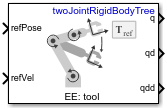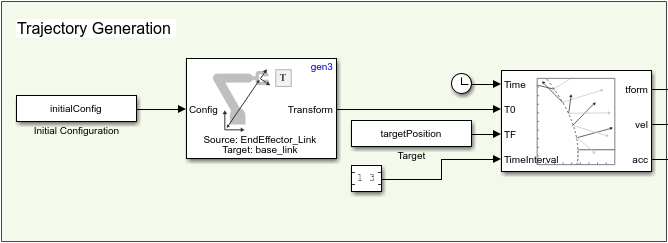Task Space Motion Model
Model rigid body tree motion given task-space inputs
Libraries:
Robotics System Toolbox /
Manipulator Algorithms
Description
The Task Space Motion Model block models the closed-loop task-space motion
of a manipulator, specified as a rigidBodyTree object. The motion model behavior
is defined using proportional-derivative (PD) control.
For more details about the equations of motion, see Task-Space Motion Model.
Examples
Ports
Input
Output
Parameters
References
[1] Craig, John J. Introduction to Robotics: Mechanics and Control. Upper Saddle River, NJ: Pearson Education, 2005.
[2] Spong, Mark W., Seth Hutchinson, and Mathukumalli Vidyasagar. Robot Modeling and Control. Hoboken, NJ: Wiley, 2006.

